
As you enjoy time with your family this weekend, remember your holiday table represents more than just food and football. It represents generosity, gratitude, unity, tradition and above all — hard work. Every dish was prepared with care, but only after weeks (or months) of labor and sacrifice by farmers around the world. During this holiday take some time say “Thank you” to the farmers that work so hard everyday to feed the world. While there are many traditions for the food we enjoy at Thanksgiving, we hope you enjoy this brief history of a selection of them.
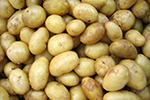
Mashed Potatoes
While buttery and creamy mashed potatoes are a definite favorite on many contemporary Thanksgiving tables, they were not a part of the original Thanksgiving feast documented by William Bradford in his journal. Potatoes were introduced by European immigrants many times throughout the 1600’s, but were not widely raised until Scotch-Irish immigrants planted them in Londonderry, NH in 1719, and then spread across the nation with the westward expansion. Today, potatoes are the top vegetable crop in the United States, being raised commercially in 30 states, with Idaho, Washington, Wisconsin, Colorado, and North Dakota producing the majority of the spuds. Yearly in the US, over 110 pounds of potatoes are consumed per person.
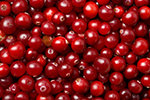
Cranberry Sauce
Cranberries are indigenous to North America and were most likely introduced by the Algonquian peoples
to starving English settlers in Massachusetts, who then incorporated them into their Thanksgiving feasts. The berry was a perfect substitute for the gooseberry or redcurrant they were familiar with back in Britain, so it quickly gained in popularity. Today, cranberry sauce has diminished from favor on many tables, with juice and dried cranberry products becoming more popular. Cranberry production in the United States is around 850 million pounds with Wisconsin as the leading producer.
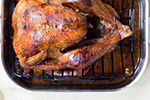
Turkey
What would a Thanksgiving dinner be without the turkey? Even though there are many culinary traditions for the yearly feast across the country, turkey remains the common entree on most tables. Even Governor Bradford documented how the colonists had hunted wild turkey during the autumn of 1621. Then when President Lincoln declared Thanksgiving a national holiday in 1863, the All-American fowl instantly became the main course of choice — not only for its flavor, but also that it was big enough to feed large gatherings. Today, turkey production in the United States is estimated at greater than 250 million birds with Minnesota as the largest producing state. For Thanksgiving alone, almost 50 million turkeys are consumed by 88% of all Americans.

Pumpkin Pie
While “pompion” pie, as it was called in Europe, was likely to have been a part of the first Thanksgiving feast, we might be hard pressed to recognize its flavor when compared to contemporary pies. An English recipe from 1670 instructed building a pie with alternating layers of pumpkin and apple, spiced with rosemary, sweet marjoram, and a handful of thyme. Pumpkin pie as we know it, began increasing in popularity after the Civil War with the many write-ups and recipes published in the magazines of that time. In 1929, Libby’s introduced a line of canned pumpkin that made pumpkin pie preparation easy. Today, the top pumpkin producing state is Illinois, and nation-wide over 1.5 billion pounds of pumpkin is produced.
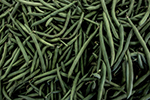
Green Bean Casserole
Ah, the green bean casserole, that culinary delight so many of us in the Midwest enjoy at Thanksgiving, was definitely NOT on the scene in 1621. Originally created in the Home Economics Department kitchens of the Campbell Soup Company in 1955, it was used to promote the use of cream of mushroom soup in a new vegetable side dish. While corn, peas, and even lima beans were considered as vegetables in the recipe, the humble snap bean rose up as the victor. Snap beans are grown by gardeners and farmers throughout the United States and enjoyed as a mainstay vegetable, and the top production states are Wisconsin, Florida, and New York.
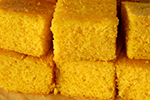
Corn Bread
Corn bread is truly an American food that originated with indigenous native Americans long before settlers came from Europe. Originally made from cornmeal ground from native American grain corn, or maize, early recipes were very simple — consisting of only cornmeal, water, cooking fat, and salt. Today, however, this recipe most likely does not find its way to many Thanksgiving tables. Instead, recipes that include chemical leavening instead of yeast for convenience, sugar for sweetness, and wheat flour and eggs for lightness, are much more popular. Cornmeal today is produced from both while and yellow field corn — the white being more popular in the southern states and the yellow popular in the northern states.
We hope you have enjoyed this brief history and insight into some of the foods we enjoy during this season. So when you sit down at the table of this truly American holiday, remember the women and men that work hard to produce the food we enjoy every day of the year.
From all of us at Kinze, we wish you a wonderful and blessed day with family and friends!
